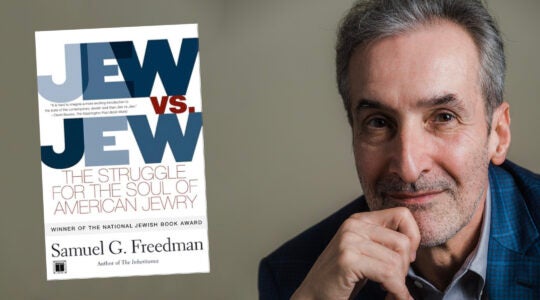Editor’s Note: Thank you to all of the educators who shared their ideas about fidget spinners for this blog!
For the last few months, educators and parents across the country have been trying to make sense of the fidget spinner craze. The spinner, which sells at drug and novelty stores and online retailers, has held the number one toy spot on amazon for weeks. If you know an elementary age kid or tween, you’ve probably seen the spinner (and possibly it’s slightly less popular cousin “the fidget cube”), in multiple colors.
A couple of weeks ago when I put out a query about how educators were feeling about fidget spinners in their classrooms on Jedlab, a popular facebook group for Jewish educators, I was surprised to receive 43 comments—many impassioned—about whether or not the spinners were helpful for students with attention issues.
Many Hebrew schools are now closed for the summer, but secular and day school teachers are anticipating the last few weeks of school, when focus is a challenge for everyone. And we know that the spinners will be arriving in the pockets of kids headed to day and overnight camp and that staff may struggle to set guidelines around when and where the spinners can be used. To offer a big picture on not only the spinners but also on the use of fidget tools in general, I’m sharing these insights from a number of Jewish educators.
Understanding Sensory Regulation
While the fidget spinners may seem like a craze that came out of nowhere, the idea of using fidget tools like stress balls to help children with learning, behavior or sensory integration issues isn’t new. Kids (and adults) who have ADHD, sensory processing issues, and/or may be diagnosed on the autism spectrum may need some kind of movement to regulate their sensory systems so that they can focus on what’s happening in the classroom. Some kids can be more attentive when they have small hand movement going on, like squeezing putty, while engaging in a task. Our schools and camps are full of children who may be diagnosed with a specific learning issue and even have fidget tools as part of their learning plans—and other children who may not have a specific diagnosis but whose behavior communicates that they need help with focus and attention.
Taking a step back, it’s helpful for all educators who work with kids to learn more about sensory processing issues and how movement can relate to attention. And remember—supports for sensory processing needs to be determined on an individual basis and fidget toys don’t benefit all kids who have sensory processing issues.
Have a Conversation
How is a teacher then to know whether the spinner is a helpful tool for a child who needs support focusing—or simply a distraction?
A number of educators who responded to my query see the fidget spinner craze as a moment to pause and engage student in a conversation about their learning and attention needs. “I will say that the spinners have given me the opportunity to talk even more openly with students about the difference between a toy that can be a distraction and a tool that can really help,” says educator Lisa Friedman. “And I am all for helping our kids learn to advocate for themselves around the use of such tools. If this is an opportunity to do just that, it’s not all bad.”
Therapist Sheryl Jaffe concurs. “I’ve found that asking folks why they enjoy their spinner and how it’s helping them is useful, to both the individual(s) with the spinner (because it’s acknowledging and validating), and it’s helpful as a teacher/therapist/facilitator, because it provides you with more information regarding the individual(s) needs for sensory-tactile stimulation,” Jaffe explains. “In response, you can provide additional opportunities for sensory-tactile infused learning and integration. It can also help folks identify moments that trigger increased distress (that, in turn, necessitate an individual(s) desire for self-regulation, using a fidget spinner, or otherwise).
Observation
It’s difficult for a teacher to observe specific students in a busy classroom, but many experts recommend that observation is necessary to determine whether the spinner is actually supporting students’ attention.
Jaime Bassman, a pediatric occupational therapist who consults with Jewish Learning Venture, encourages teachers to observe what’s happening when a student uses a spinner. “Look at the child’s response and note if it’s helping them to focus or causing them to become even more dysregulated,” she says. “I can’t support a wholesale ban on them because it may help certain children, but I can also say that multiple children using fidgets at once when they don’t need them can dysregulate everyone around them.”
Dr. Nicole Beurkens, a behavior specialist working with young people on the autism spectrum, says the critical question is: Is the student able to get their work done and focus? If the spinner is a distraction and not helpful in focus, don’t ban it all together, but use it as a reward to be played with after work is done or for recess/break time.
Movement Breaks
Research has shown that movement benefits all learners—whether someone has a diagnosed learning/sensory issue or not. Students/campers who crave fidget toys may benefit from regular movement breaks even more than using a handheld fidget.
In Jewish settings, there are many fun ways to integrate learning into movement activities, such as doing Alef-bet yoga or counting in Hebrew as you do jumping jacks. Here are lots of great movement activities that can be adapted for your classroom or camp.
Many different kinds of fidgets
Some schools have banned fidget spinners altogether. Rabbi and educator Ruti Regan offers idea on what kind of alternative fidgets could be used. “One suggestion I could make is: if you want to ban them, provide a wide variety of other fidgets, and ask kids and staff to talk to you privately if the available options don’t work for them,” Regan shares. “One thing some schools have had good success with is pieces of memory foam. Glitter tubes, balloons filled with rice or cornstarch, and tangle toys can be good too.”
Educator Hindy Finman agrees. “I love that it has put the idea of a fidget toy on the map and made them cool. This summer at camp I am hoping to make fidgets with campers/staff out of recycled material and nature’s wonders, with the aim to start conversations about our environment, inclusiveness, fads etc…I’m excited to see and hear what campers come up with,” she says. Finman, like many adults who use some kind of fidgets for focus, says her favorite fidget is to place a rock in her hand.
Normalization of fidgeting
A positive outcome of the fidget spinner craze has been what Ruti Regan describes as the “normalization of fidgeting.” She shares an important point about being sensitive to the need for fidgeting. “Disabled kids live with a lot of humiliation on a regular basis.,” she explains. “Normalization of fidgeting has offered kids permission to do it in a way that isn’t humiliating. I think that there’s been an implied promise made that it’s important to keep.”
Educator Farrah Udell takes a proactive approach with fidget toys. “I give all my 5th grade supplementary students fidget toys (stress ball, bendy figure, plastic slinky) at the beginning of the year with the rule of they need to be used quietly and cannot go in the air,” Udell says. “During our last class, I asked my students if I should get fidget spinners for students next year instead (they are all currently obsessed) or if fidget spinners won’t be cool anymore by next fall. They all immediately responded that fidget spinners won’t be cool anymore by next fall.”
Gabrielle Kaplan-Mayer directs Jewish Learning Venture’s Whole Community Inclusion which fosters inclusion of people with disabilities through the Philadelphia Jewish community. She loves writing/editing for “The New Normal” and for WHYY’s newsworks. Her latest book The Little Gate Crasher is a memoir of her Great-Uncle Mace Bugen, a self-made millionaire and celebrity selfie-artist who was 43 inches tall and was chosen for this year’s Jewish Disability Awareness & Inclusion Month Book Selections. She’s recently shared an ELI Talk on Standing With Families Raising Kids With Disabilities and has released a journal designed for special needs parents.
The New York Jewish Week brings you the stories behind the headlines, keeping you connected to Jewish life in New York. Help sustain the reporting you trust by donating today.





